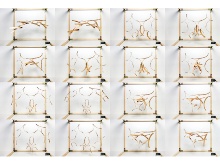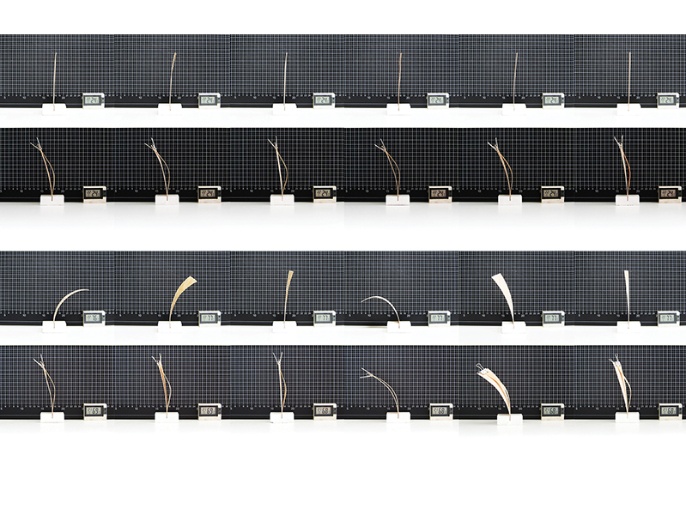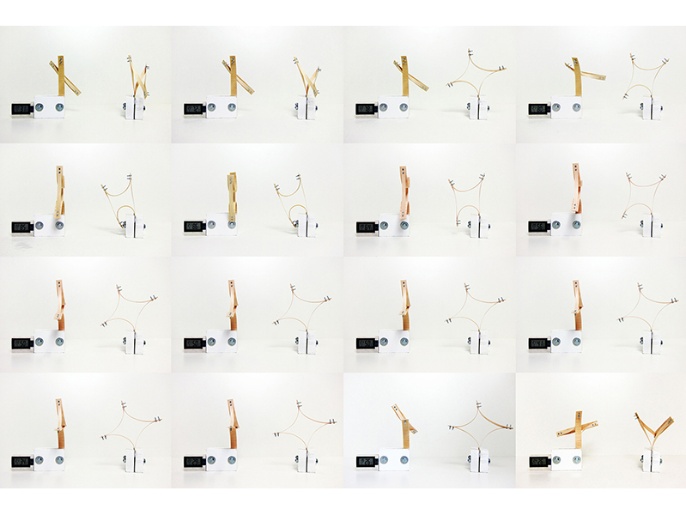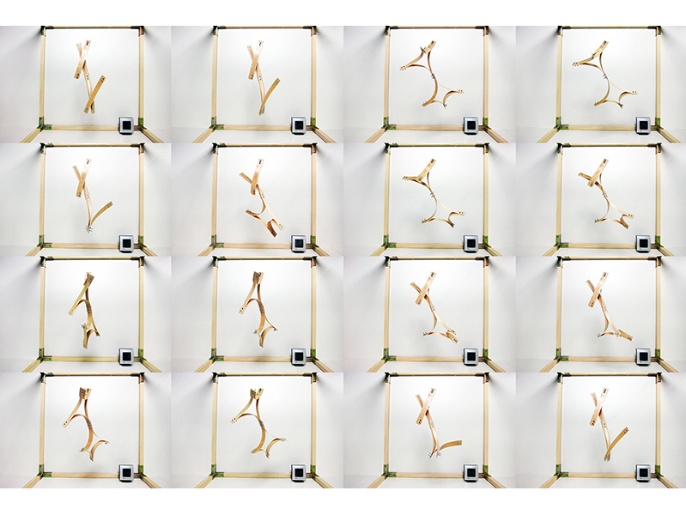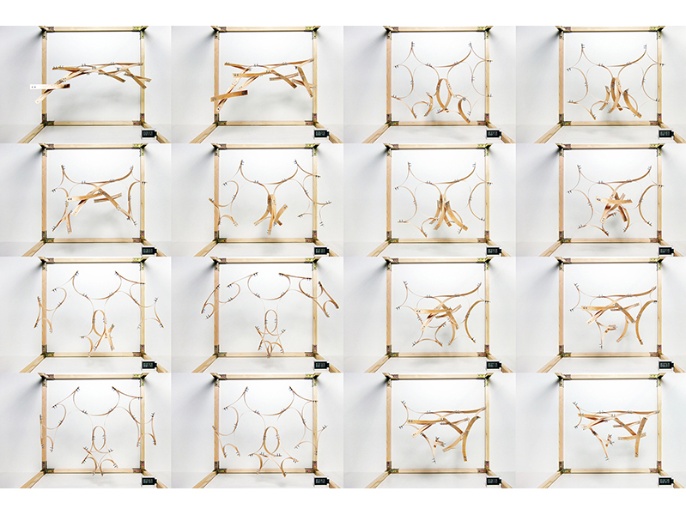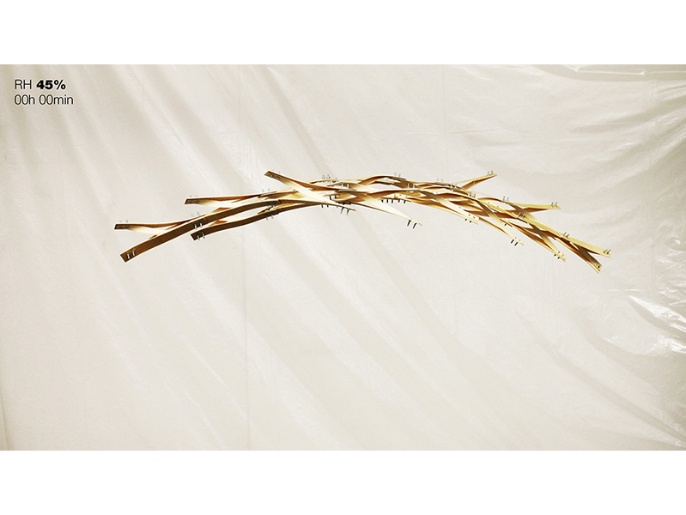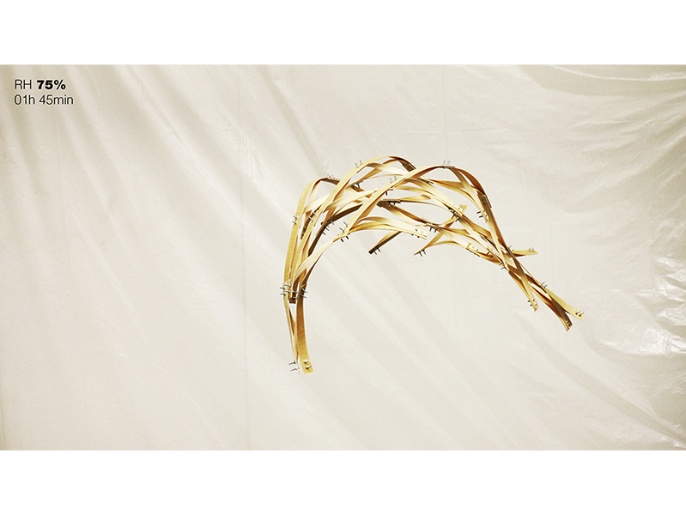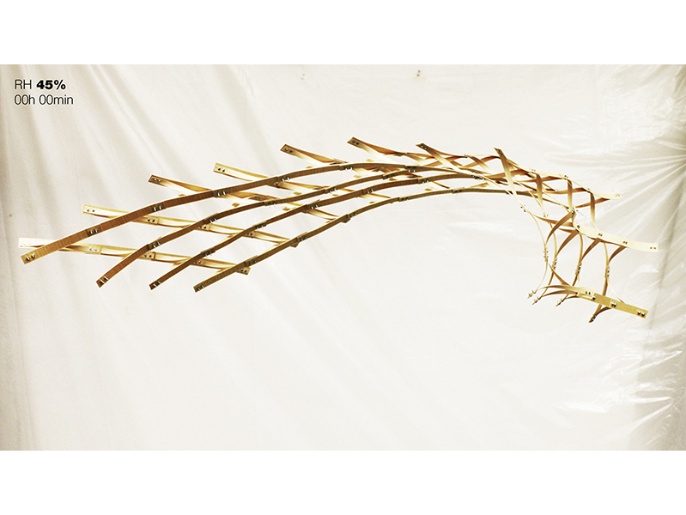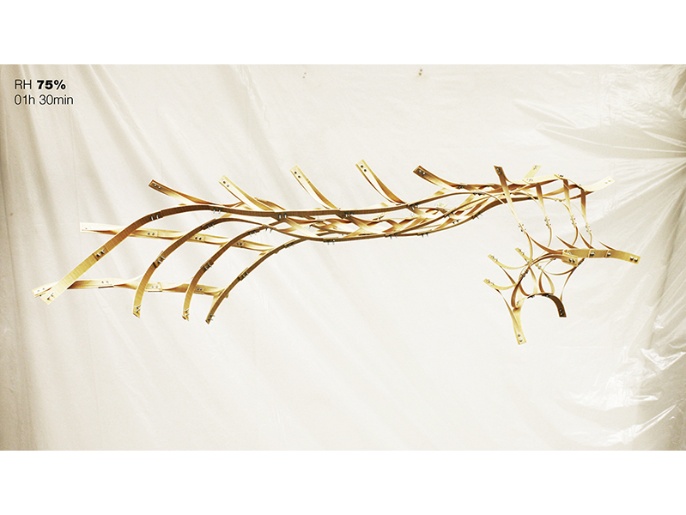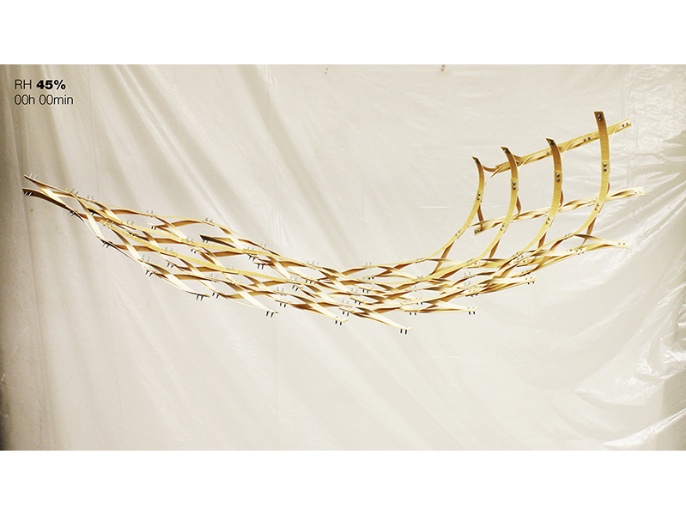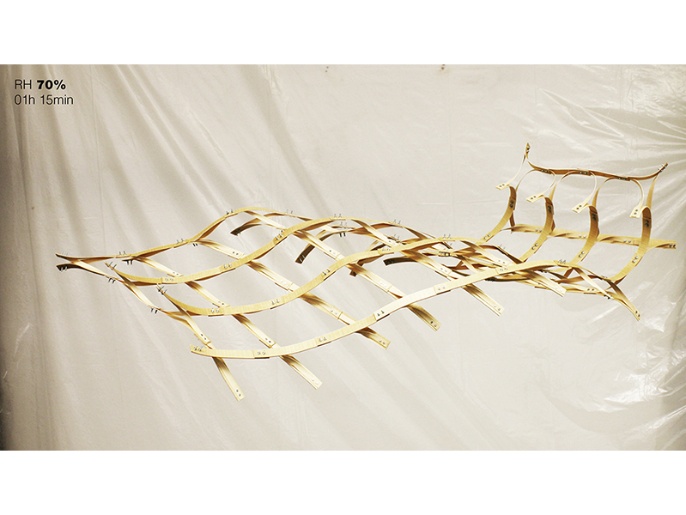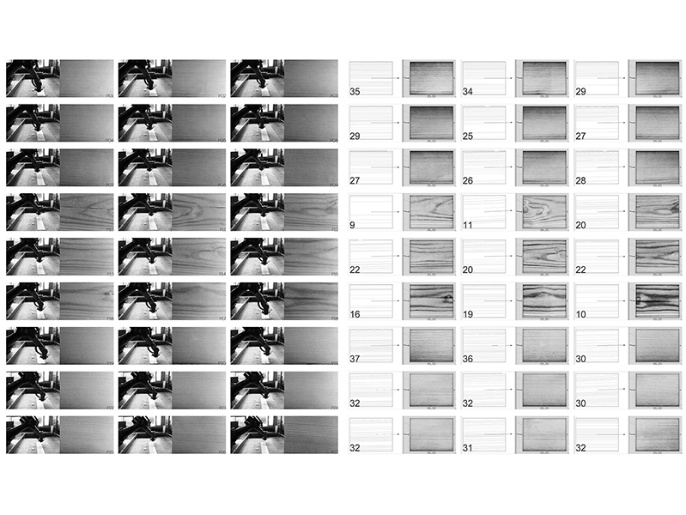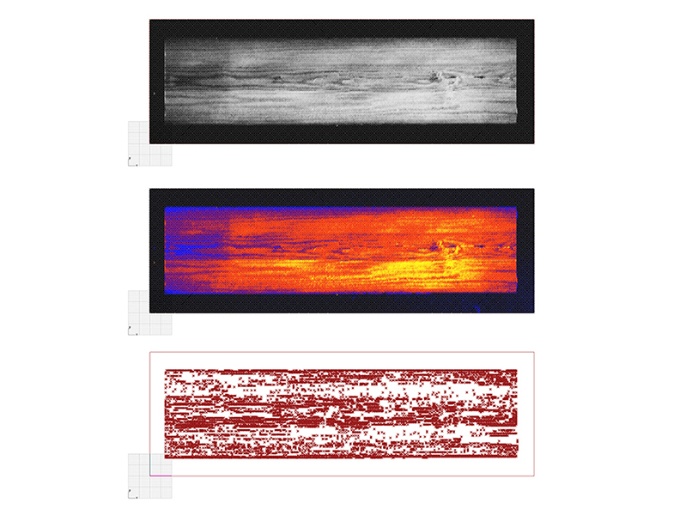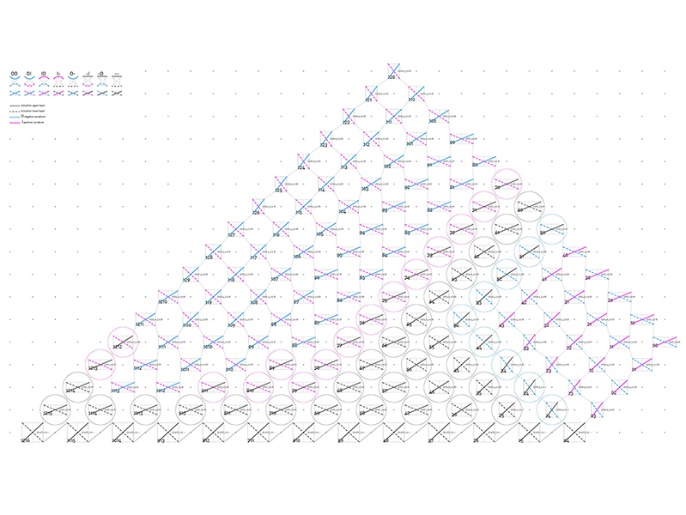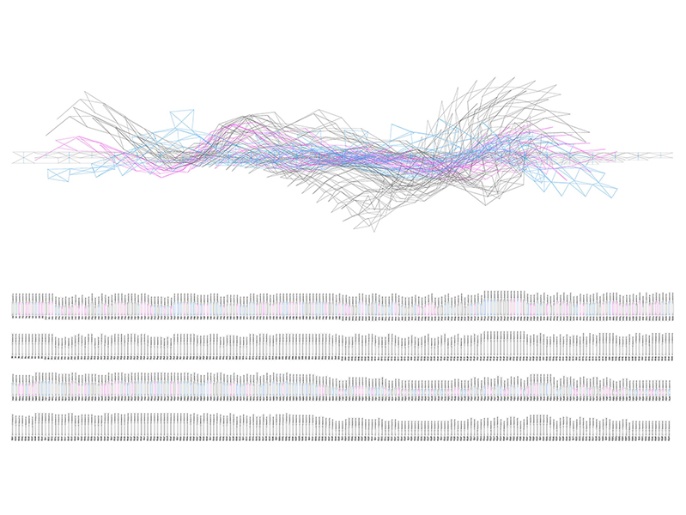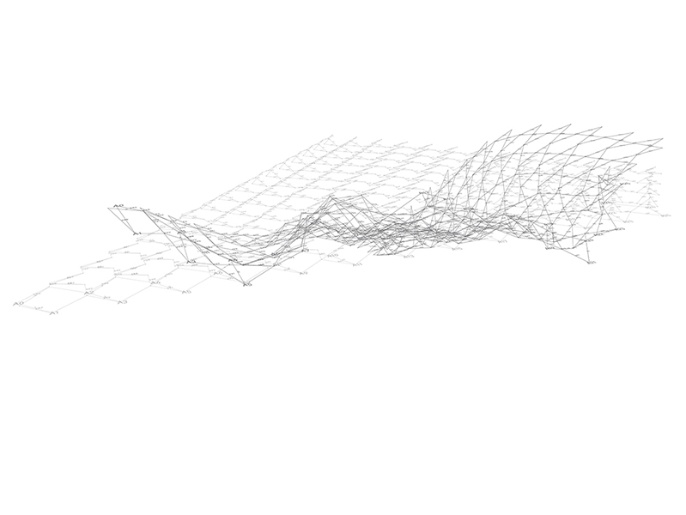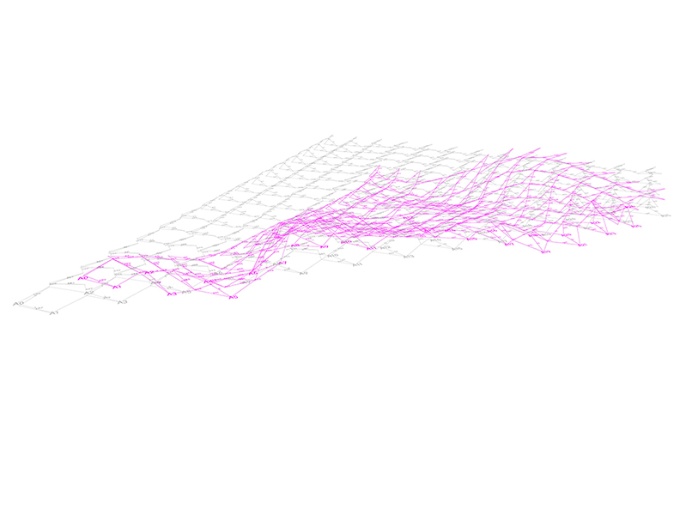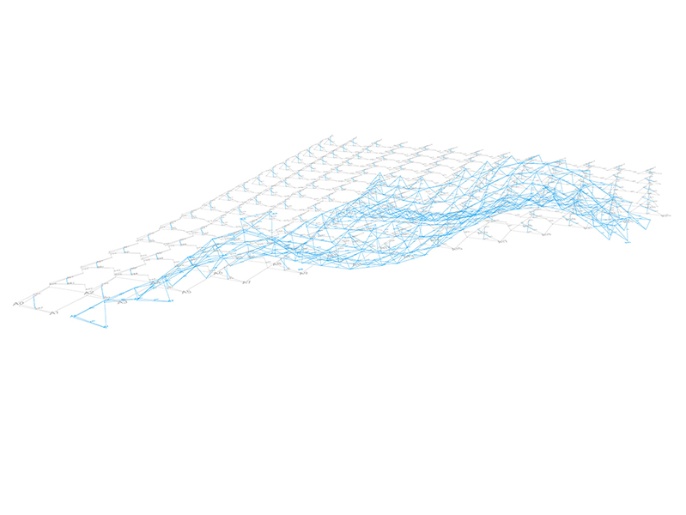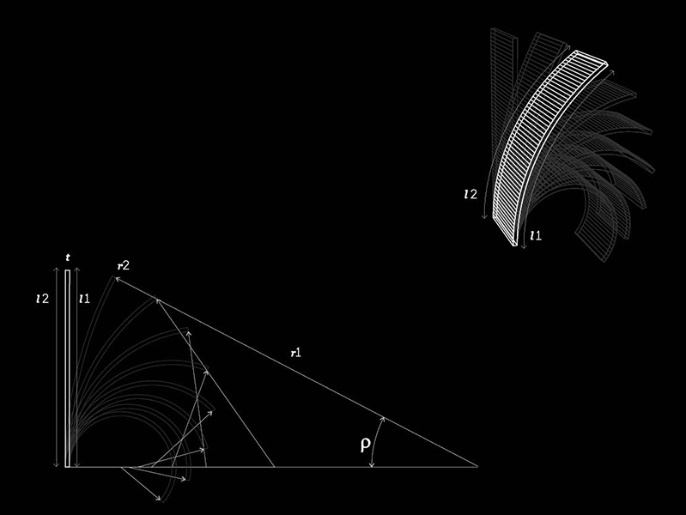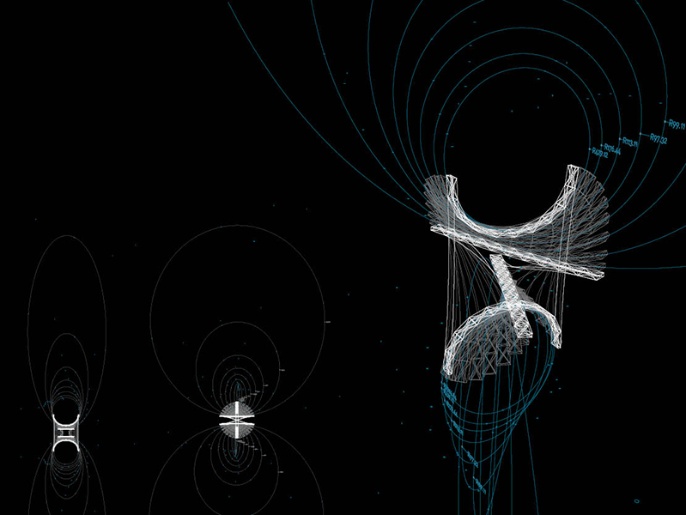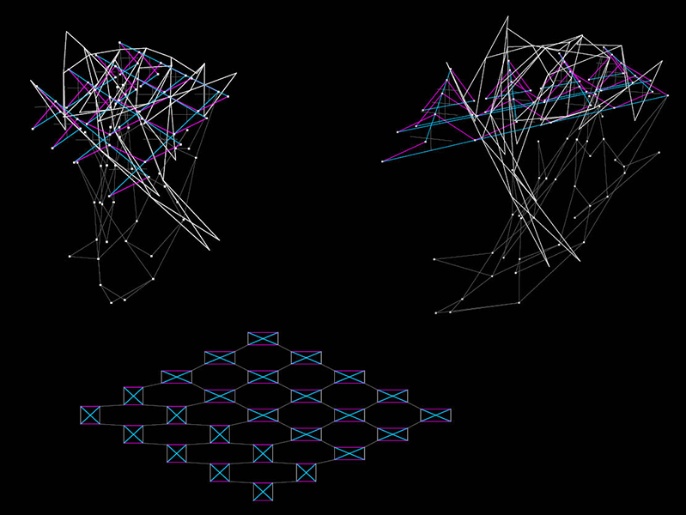Programmable Matter - Hygroscopic actuation of multidirectional lattice structures
Homogeneous, anisotropic and hygroscopic natural composite. These material characteristics provide the material with some inherent performance qualities (like its strength) but they also provide it with some other qualities that are generally considered as disadvantages in the design process (like dimensional instability).
This presented research is proposing a design framework that takes the natural heterogeneity of the material into account and turns it into a design feature. The Material capacities of wood are being fully expanded in order to develop an integrative system. By giving careful consideration to the geometry and dynamics of a responsive structure, which are achieved by quantifying the hydroscopic forces and amplifying the dimensional changes in the material, it is possible to develop a system that dynamically responds to external environmental changes without the need for external electro-mechanical input.
Through the exploration of common topology behaviors, such as elastic bending, combined with specific material behaviors, such as hygroscopy, it exists the potential to evolve into a system, capable of producing passively actuated environmental responsive structures. Over the course of history, architecture and industrial design have been gradually loosing the ability to incorporate anisotropic material properties within the design process. Therefore, dealing with complex, continuously variable and heterogeneous behavior is the challenge of this integrative design process.
In particular, the object of this research is to investigate the internal forces of wood caused both by hygroscopic dimensional changes and elastic bending to control the geometric variation of a component cell unit. Combining such cells into structures allows programming the behavior of a bottom up responsive system that is capable of reshaping itself depending on external climatic changes. Driven by the interaction of two reversible states of the material, four methods are being integrated into the design process loop: physical experiments, geometric research, computational modeling and fabrication. One process feeds and informs the next one: from physical tests, geometric and material behavior parameters are extracted to inform a computational model.
From the computational model, which includes four simulation methods, fabrication data is being obtained. Fabrication starts by using a computational tool to robotically sort out material in order to select optimal areas for desired behaviors. Parts are then being fabricated, assembled and tested. Parameters extracted from the tests are being documented and taken into account when producing next iterations of the system
ITECH M.Sc. Thesis Project 2014: Programmable Matter - Hygroscopic actuation of multidirectional lattice structures
Belen Torres
Thesis Advisers: Oliver Krieg, David Correa
Thesis Supervisor: Prof. Achim Menges
Second Supervisor: Prof. Jan Knippers
Homogeneous, anisotropic and hygroscopic natural composite. These material characteristics provide the material with some inherent performance qualities (like its strength) but they also provide it with some other qualities that are generally considered as disadvantages in the design process (like dimensional instability).
This presented research is proposing a design framework that takes the natural heterogeneity of the material into account and turns it into a design feature. The Material capacities of wood are being fully expanded in order to develop an integrative system. By giving careful consideration to the geometry and dynamics of a responsive structure, which are achieved by quantifying the hydroscopic forces and amplifying the dimensional changes in the material, it is possible to develop a system that dynamically responds to external environmental changes without the need for external electro-mechanical input.
Through the exploration of common topology behaviors, such as elastic bending, combined with specific material behaviors, such as hygroscopy, it exists the potential to evolve into a system, capable of producing passively actuated environmental responsive structures. Over the course of history, architecture and industrial design have been gradually loosing the ability to incorporate anisotropic material properties within the design process. Therefore, dealing with complex, continuously variable and heterogeneous behavior is the challenge of this integrative design process.
In particular, the object of this research is to investigate the internal forces of wood caused both by hygroscopic dimensional changes and elastic bending to control the geometric variation of a component cell unit. Combining such cells into structures allows programming the behavior of a bottom up responsive system that is capable of reshaping itself depending on external climatic changes. Driven by the interaction of two reversible states of the material, four methods are being integrated into the design process loop: physical experiments, geometric research, computational modeling and fabrication. One process feeds and informs the next one: from physical tests, geometric and material behavior parameters are extracted to inform a computational model.
From the computational model, which includes four simulation methods, fabrication data is being obtained. Fabrication starts by using a computational tool to robotically sort out material in order to select optimal areas for desired behaviors. Parts are then being fabricated, assembled and tested. Parameters extracted from the tests are being documented and taken into account when producing next iterations of the system
ITECH M.Sc. Thesis Project 2014: Programmable Matter - Hygroscopic actuation of multidirectional lattice structures
Belen Torres
Thesis Advisers: Oliver Krieg, David Correa
Thesis Supervisor: Prof. Achim Menges
Second Supervisor: Prof. Jan Knippers


